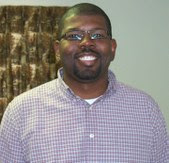It has been some time since I have done a mental health related blog so I felt it was time to revisit this area. I am beginning a two part series that will discuss anxiety disorders and the treatment of them.
Every human feels anxiety on occasion; it is a part of life. All of us know what it is like to feel worry, nervousness, fear, and concern. We feel nervous when we have to give a speech, go for a job interview, or walk into our boss’s office for the annual performance appraisal. We know it’s normal to feel a surge of fear when we unexpectedly see a photo of a snake or look down from the top of a tall building. Most of us manage these kinds of anxious feelings fairly well and are able to carry on with our lives without much difficulty. These feelings don’t disrupt our lives.
But millions of people (an estimated 15% of the population) suffer from devastating and constant anxiety that severely affects their lives, sometimes resulting in living in highly restricted ways. These people experience panic attacks, phobias, extreme shyness, obsessive thoughts, and compulsive behaviors. The feeling of anxiety is a constant and dominating force that disrupts their lives. Some become prisoners in their own homes, unable to leave to work, drive, or visit the grocery store. For these people, anxiety is much more than just an occasional wave of apprehension.
Types of Anxiety Disorders
An anxiety disorder affects a person’s behavior, thoughts, feelings, and physical sensations. The most common anxiety disorders include the following:
Social anxiety or social phobia is a fear of being around other people. People who suffer from this disorder always feel self-conscious around others. They have the feeling that everyone is watching them and staring at them, being critical in some way. Because the anxiety is so painful, they learn to stay away from social situations and avoid other people. Some eventually need to be alone at all times, in a room with the door closed. The feeling is pervasive and constant and even happens with people they know.
People who have social anxiety know that their thoughts and fears are not rational. They are aware that others are not actually judging or evaluating them at every moment. But this knowledge does not make the feelings disappear.
Panic disorder is a condition where a person has panic attacks without warning. According to the National Institutes of Mental Health, about 5% of the adult American population suffers from panic attacks. Some experts say that this number is actually higher, since many people experience panic attacks but never receive treatment.
Common symptoms of panic include:
• Racing or pounding heart
• Trembling
• Sweaty palms
• Feelings of terror
• Chest pains or heaviness in the chest
• Dizziness and lightheadedness
• Fear of dying
• Fear of going crazy
• Fear of losing control
• Feeling unable to catch one’s breath
• Tingling in the hands, feet, legs, or arms
A panic attack typically lasts several minutes and is extremely upsetting and frightening. In some cases, panic attacks last longer than a few minutes or strike several times in a short time period.
A panic attack is often followed by feelings of depression and helplessness. Most people who have experienced panic say that the greatest fear is that the panic attack will happen again.
Many times, the person who has a panic attack doesn’t know what caused it. It seems to have come “out of the blue.” At other times, people report that they were feeling extreme stress or had encountered difficult times and weren’t surprised that they had a panic attack.
Generalized anxiety disorder is quite common, affecting an estimated 3 to 4% of the population. This disorder fills a person’s life with worry, anxiety, and fear. People who have this disorder are always thinking and dwelling on the “what ifs” of every situation. It feels like there is no way out of the vicious cycle of anxiety and worry. The person often becomes depressed about life and their inability to stop worrying.
People who have generalized anxiety usually do not avoid situations, and they don’t generally have panic attacks. They can become incapacitated by an inability to shut the mind off, and are overcome with feelings of worry, dread, fatigue, and a loss of interest in life. The person usually realizes these feelings are irrational, but the feelings are also very real. The person’s mood can change from day to day, or even hour to hour. Feelings of anxiety and mood swings become a pattern that severely disrupts the quality of life.
People with generalized anxiety disorder often have physical symptoms including headaches, irritability, frustration, trembling, inability to concentrate, and sleep disturbances. They may also have symptoms of social phobia and panic disorder.
Other types of anxiety disorders include:
Phobia, fearing a specific object or situation.
Obsessive-compulsive disorder (OCD), a system of ritualized behaviors or obsessions that are driven by anxious thoughts.
Post-traumatic stress disorder (PTSD), severe anxiety that is triggered by memories of a past traumatic experience.
Agoraphobia, disabling fear that prevents one from leaving home or another safe place.
In the next post I will discuss treatment options for anxiety disorders.
Tuesday, July 31, 2007
Subscribe to:
Post Comments (Atom)



No comments:
Post a Comment